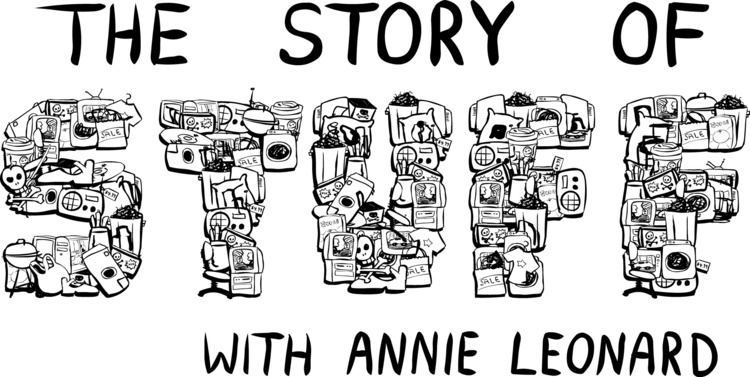The Story of Stuff
4 /10 1 Votes4
Duration | Director Louis Fox Language English | |||||||||||||||||||||||||||||||||
 | ||||||||||||||||||||||||||||||||||
Release date December 4, 2007 (2007-12-04) (Online) | ||||||||||||||||||||||||||||||||||
The Story of Stuff is a short animated documentary about the lifecycle of material goods. The documentary is critical of excessive consumerism and promotes sustainability.
Contents

Filmmaker Annie Leonard wrote and narrated the film, which was funded by Tides Foundation, Funders Workgroup for Sustainable Production and Consumption, Free Range Studios and other foundations. Free Range Studios also produced the documentary, which was first launched online on December, 2007.
The documentary is being used in elementary schools, arts programs, and economics classes as well as places of worship and corporate sustainability trainings. By February 2009, it had been seen in 228 countries and territories. According to the Los Angeles Times as of July 2010, the film had been translated into 15 languages and had been viewed by over 12 million people.
The story of stuff ch 5 consumption
Contents
The 22-minute video presents a critical vision of consumerist society, primarily American. It purports to expose "the connections between a huge number of environmental and social issues, and calls us together to create a more sustainable and just world." The video is divided into seven chapters: Introduction, Extraction, Production, Distribution, Consumption, Disposal, and Another Way.
The video divides up the materials economy into a system composed of extraction, production, distribution, consumption, and disposal. To articulate the problems in the system, Leonard adds people, the government, and corporations.
Leonard's thesis, "you cannot run a linear system on a finite planet indefinitely" is supported throughout the video by statistical data. Although the video itself doesn't give attribution to her information, the producers provide an annotated script that includes footnotes with explanations and sources for some of her assertions:
Leonard also quotes what Victor Lebow said in 1955 regarding economic growth:
"Our enormously productive economy... demands that we make consumption our way of life, that we convert the buying and use of goods into rituals, that we seek our spiritual satisfaction, our ego satisfaction, in consumption... we need things consumed, burned up, replaced and discarded at an ever-accelerating rate."Reaction
The Story of Stuff has been subject to public discussion, especially after The New York Times published a front page article about the video on May 10, 2009. Even before The New York Times article, The Sustainable Enterprise Fieldbook pointed to The Story of Stuff as a successful portrayal of the problems with the consumption cycle, and Greyson (2008) says it is an engaging attempt to communicate circular economics. Ralph Nader called the film "a model of clarity and motivation." John Passacantando, Executive Director of Greenpeace, called it a "mega-hit on three levels".
It also attracted the attention of conservative commentators such as Glenn Beck, who characterized the video as an "anti-capitalist tale that unfortunately has virtually no facts correct." Influenced by such commentary, the Montana school board opposed the screening of the film in a biology classroom in a 4–3 vote. The subsequent public outcry against this decision led to a rewrite of the school board's policy and an award for the teacher who screened the film.
